Question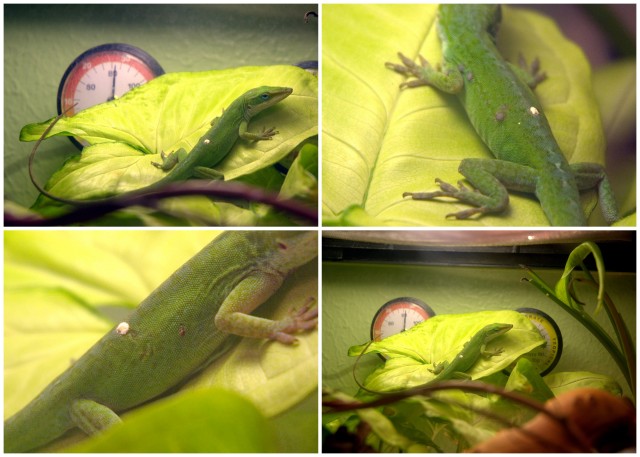 Anole Collage
Anole Collage
QUESTION: I have been keeping green anoles for about 6 months now, and I have housed them in varied sizes of aquariums with potting soil substrate and live plants, with plenty of climbing surfaces. The current setup is 18 gallons of upright reptile terrarium with a UVA/B light, basking light, and an ultraviolet night light to help keep the temperature up at night. The basking spot during the day is about 85-90 degrees, and there are plenty of coll shady spots to hide in the vivarium. Humidity ranges from 50-75% depending on when I've last watered the plants. I feed a diet of mostly crickets, which are dusted weekly with rep-cal phosphorous-free calcium with vitamin D. Crickets are
gut-loaded using cricket diet and other wholesome foods like oranges, oats, and leafy greens. Occasionally I feed waxworms and even more rarely, mealworms, but generally only if there's a cricket shortage. I feed wild-caught insects in the warmer months, as well, such as moths and flies. My original Anole was wild-caught by me in the middle of a strip-mall last summer, and has been a great and entertaining pet who really doesn't like to be handled. She had laid eggs and one hatched. We were ecstatic, and the little hatchling was doing well on a diet of flightless fruit flies in a smaller nursery tank until he was big enough to put into the main enclosure. I was hand-feeding the hatchling, and really enjoying watching him grow and be comfortable with being handled.
I purchased two more anoles at a pet store, a male and female, and over time, separated the male from the others as he never ate and was very thin. He was on his last legs on Halloween night, and I saw him gasping for air as I opened the cages to mist and feed the lizards. I took him out to try a warm bath to see if I could revive him, and unfortunately I left the cages open. After he'd died, I realized that the cat got into them and killed the hatchling, and was caught with the storebought female in his mouth. He dropped her when I caught him, but she had bite wounds over he hips. We treated her at home with wound treatments from the pet store and neosporin and she seemed to be recovering well, but about a week afterwards, she took a turn for the worse and the wounds became infected and she died 10 days
after the attack while I was sleeping.
I was devastated by these losses, and they aren't really relevant to my question, but I want you to understand that I have done a LOT of research into the care and handling of these animals. It has been several months since the lizards died and I have been watching the local pet stores for male anoles. Finally I found one, and I was very excited because I thought he had unusual color patterns on his sides and might be some kind of color morph. He is a good size, very robust-looking and seemed healthy. However, when I got him home and settled and he turned a nice bright green instead of the greenish-brown he'd been in the store, I could see that what I thought were just mottled spots of color pattern similar to what runs down the spine of many anoles was actually small brown bumps. I have a high-quality camera, so I took macro photos of him so you can see the condition he is in. They are attached. The first shows his full body. The white spot on his back is just lizard poop, but you can see some scarring on his side below it on the first and third pictures. The second is a photo of his other side, where the brown bumps are. Is this a treatable condition? If so, is it something I can do on my own? I have done volunteer work at animal hospitals and have studied animals pretty intensely, as I wanted to be a veterinarian when I was younger, until a weak stomach in high school turned me off the idea. Unfortunately, if it will require the assistance of a vet, I am going to have to return him to the pet shop and keep waiting until I can find a healthy specimen to be a companion for my other anole.
Thanks in advance for your help,
Sincerely,
Tabby
ANSWER: Hello Tabby,
Those are very good pictures, thank you for posting them for me. I know the feeling, I wanted to be a vet when I was a kid but my family was no support at all. I did get my master's in sports medicine & physiology & do have a year in vet tech & am certified.
Sorry things did not work out for you, I know that is disappointing for you. It sounds like you have done a lot of studying & research on your own which is excellent!
Those are unusual bumps. How long have you had him for?
What type of UVB light are you using? Did he have any UVB light on him in the petstore?
He looks like a good sized anole, what is he lengthwise, around 8-10?
The bumps, are they hard I am assuming?
It could be cysts, or it could be calcium deposits from poor absorption in the past. Hard nodules on the rib cage area or cervical area on the back can form from oversupplementation of calcium or D3 or lack of supplementation.
Are they affecting his appetite & is he doing well despite the bumps?
Tracie
---------- FOLLOW-UP ----------
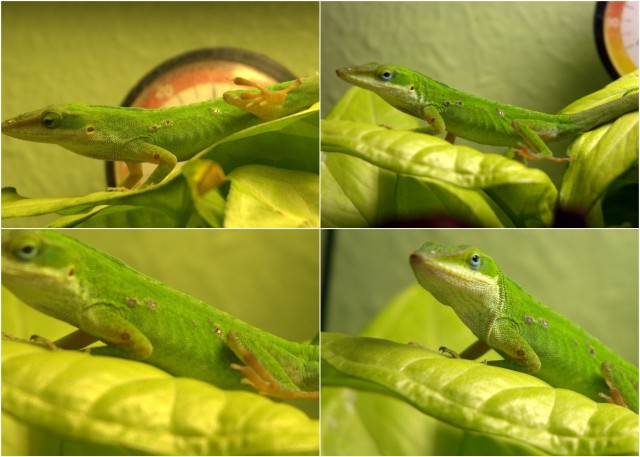 Anole Collage 2
Anole Collage 2
QUESTION: Tracie,
I bought him on Friday, February 5th. He has been eating normally. I bought a repti-sun compact fluorescent That I want to say is a 5.0? I'm not 100% sure that's right, but without the box I can't remember for sure. I do remember reading up on it and asking on a reptile forum which kind/level to get, and it was the tropical one. He is quite large - almost twice as large as my female, in terms of body size, not including tail. I would guess he's about 8.5 inches long from tip to tail end. His appetite is good, and his behavior has been normal. The bumps were hard and kind of greyish white this morning, and when I stopped home after lunch, he had started molting. Tonight, when I got home, the molt was done and he looks MUCH better, so I think it was probably calcium deposits. I have no idea what or how often they were feeding him at the pet store or the place that supplied the pet store. I'm attaching an updated collage so you can see the lesions now after the molt.
I am really reluctant to return him to the store, even if that's not the cause. He is comparatively docile and handle-able. He doesn't shy away from me as much as my wild-caught female does, so I wonder if he was captive bred. It's a shame there's no way to find out.
AnswerHello Tabby,
Well, let's try switching the UVB light first. The compact/coil lights can be harmful to the eyes & overall health.
He does look better now though. I would use only calcium without D3 for sure. Also, getting a better UVB light would be a good idea. The Reptisun 10 tube bulb is the best one you can use.
He needs good UVB to help absorb calcium.
Just keep the tube bulb around 6-8 inches away from him with a bright white light beside it.
Do his bones appear to be strong, such as his jaws, et?
I would hold onto him though, as it doesn't appear to be life threatening & he should recover. He wont last long in the store if they don't take care of him. I am glad that he is fairly docile, that is quite surprising.
He is good sized, I thought he looked pretty big.
Tracie



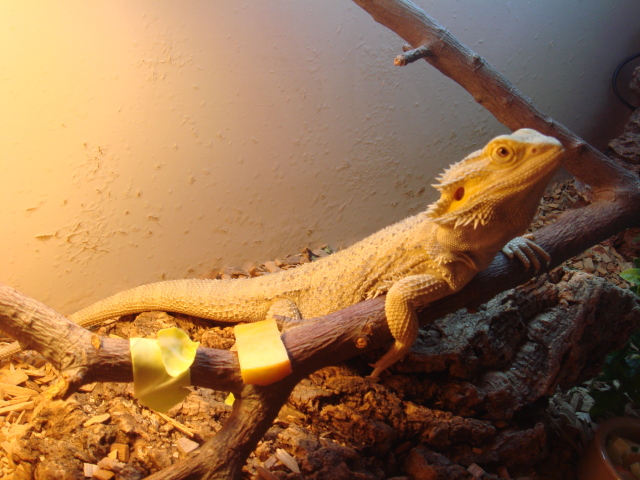 bearded dragon with one eye closed
QuestionQUESTION: i got up this morning to my bearded d
bearded dragon with one eye closed
QuestionQUESTION: i got up this morning to my bearded d
 Bearded Dragon lighting setup
Questiontank
QUESTION: Hi i recently was asking
Bearded Dragon lighting setup
Questiontank
QUESTION: Hi i recently was asking
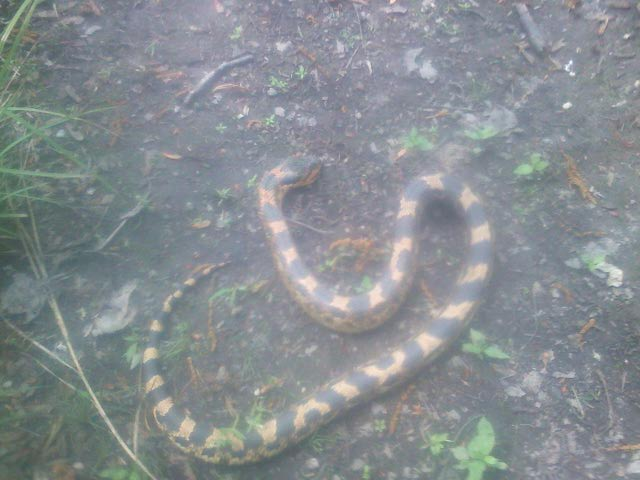 What kind of snake is this?
Question
Snake
Hello,
I live in Southern Maryla
What kind of snake is this?
Question
Snake
Hello,
I live in Southern Maryla
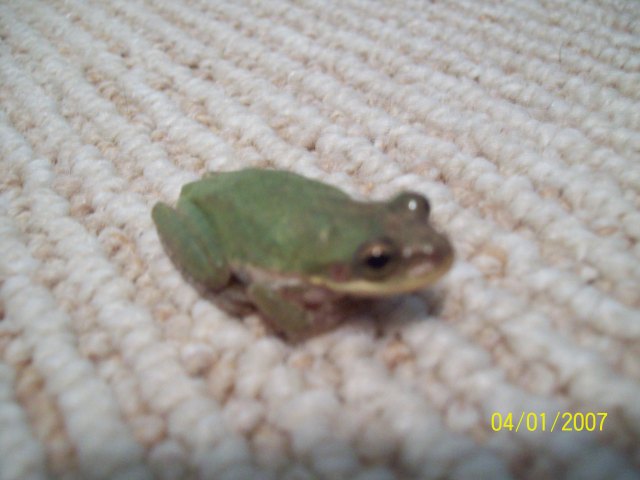 my frog
QuestionQUESTION: my frog will only be force fed. is th
my frog
QuestionQUESTION: my frog will only be force fed. is th
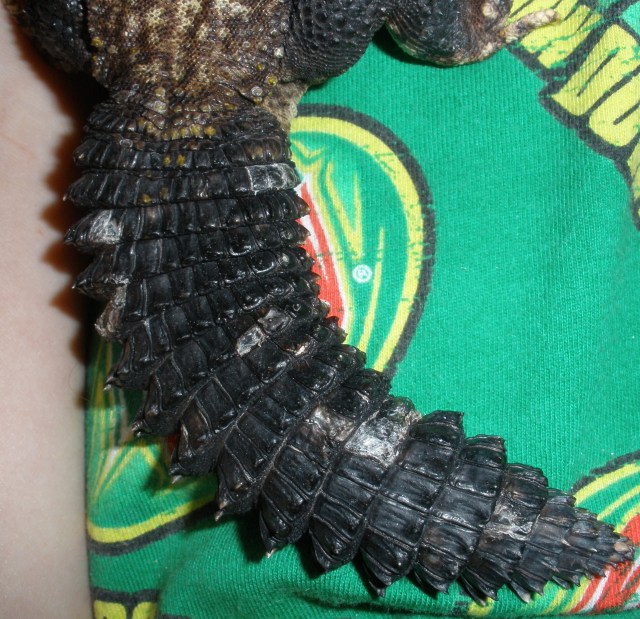 Uromastyx problems
Question
Ramoth
Ive recently rescued a pair of what I w
Uromastyx problems
Question
Ramoth
Ive recently rescued a pair of what I w